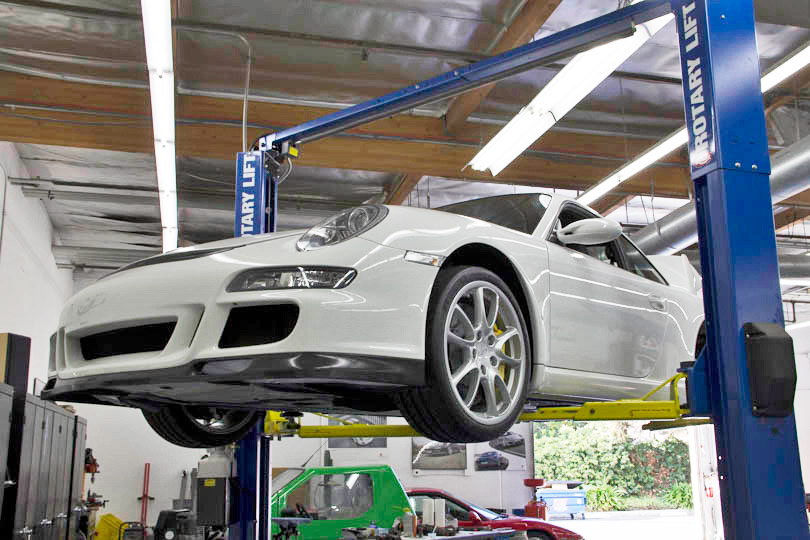
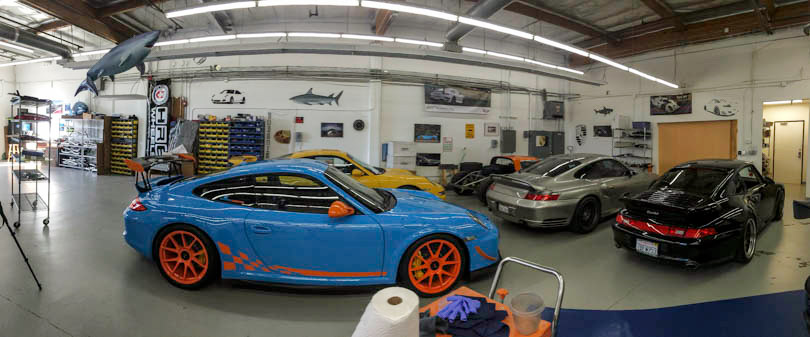
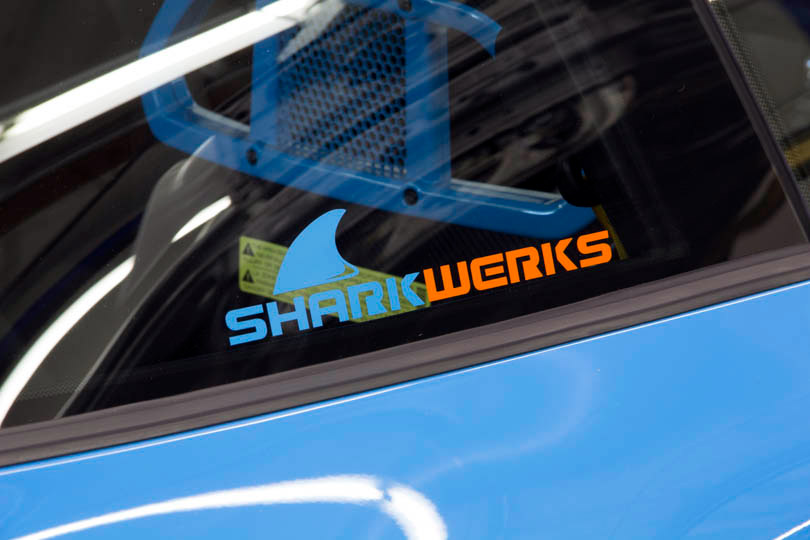
When there was no one looking, we slyly snuck into the Sharkwerks shop and took some pictures of a 997.1 GT3. Kidding, we were actually invited, thanks to all the “Sharksters” for letting us in their shop!In other suspension overviews we’ve covered the new 991 Carrera S, GT3 and the Cup car. Now, let’s see what’s behind the wheels of the 997 GT3.
The suspension of the 997.1 generation of the GT3 is very similar to the street Carrera with a few exceptions. We’ll note differences below.
Front Suspension
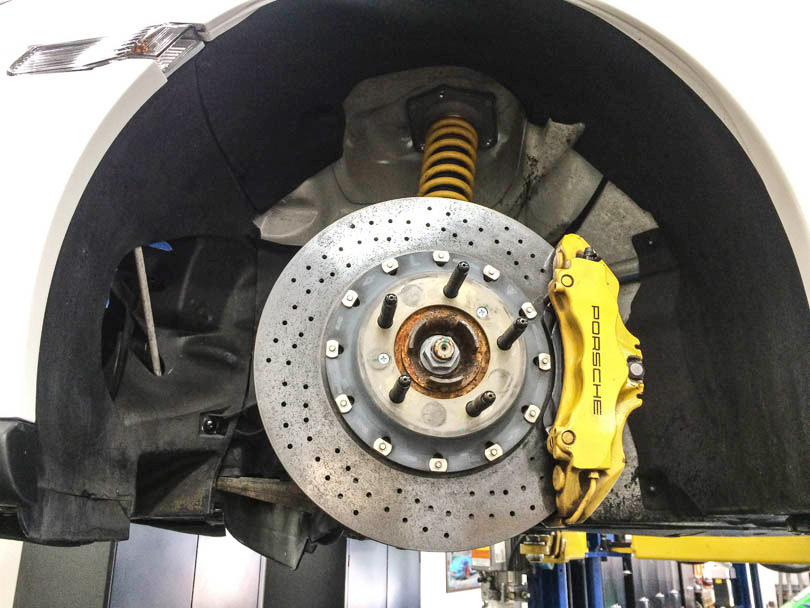
Just like the regular 997 Carrera, the GT3 sports a MacPherson type strut with a single lower control arm and caster arm. Porsche has been using Macpherson strut front suspension since the inception of 911s in 1965. It’s a simple, lightweight system that’s proven to work well on the front of the 911 series.

The lower wishbone arm is length adjustable, just like one found in the previous generation of the GT3.
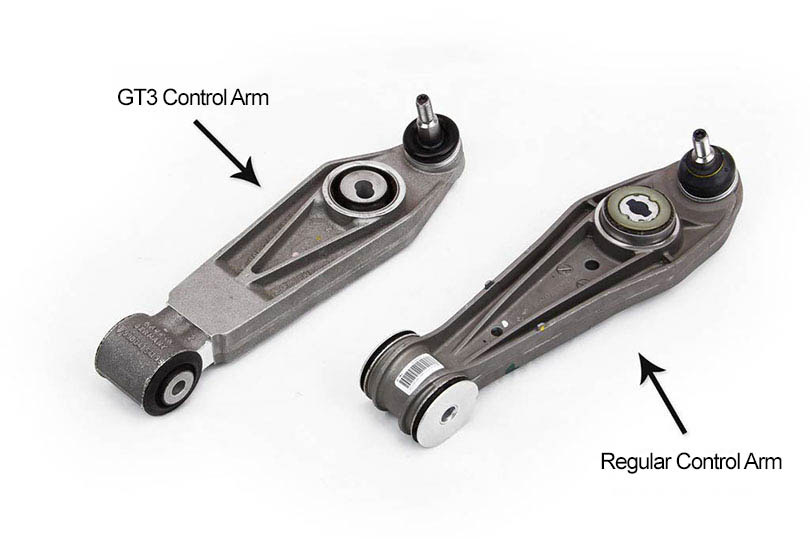
For comparison, on the left is a GT3 control arm, and on the right is the control arm found on regular non-GT3 997 cars. Note the center bushing of the GT3 is not as tall as the center bushing on the regular 997 control arm. The mating clevis is similarly narrow.
The center bushing provides two bores as shown in the comparison image above. The bores are offset to offer two caster positions. This is required because the arm is adjustable length – as the arm is made longer, caster increases. The second position allows the caster to be brought back to a reasonable value.
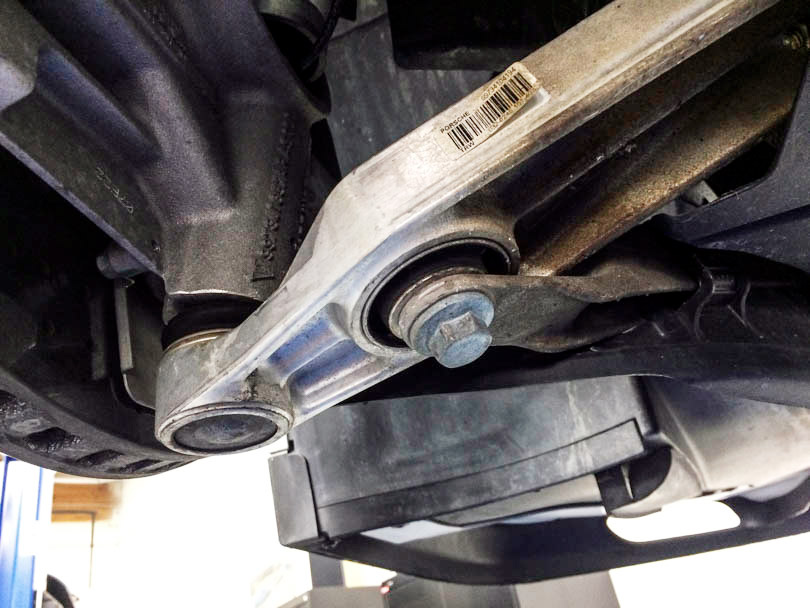
Single sheer ball joint connects the front upright to the control arm.
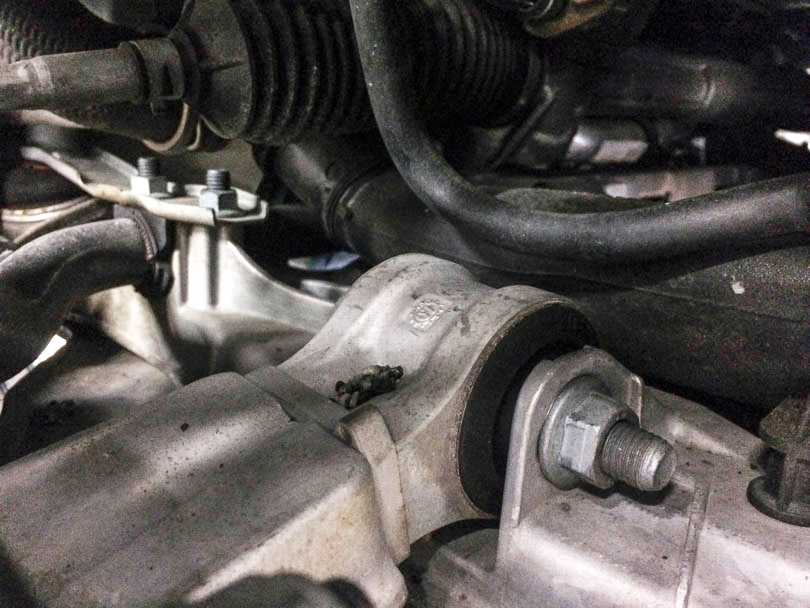
The Length of the arm is adjustable by replacing or adding larger shims between the arm and the rear bushing mount. Extending length of the arm achieves added negative camber. The rear bushing is rubber.
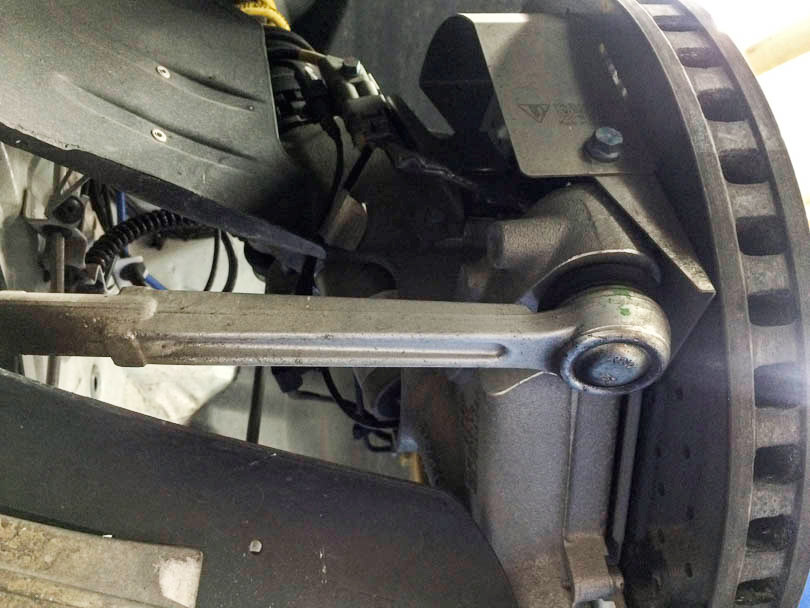
Tie rods also feature a single sheer stud ball joint.
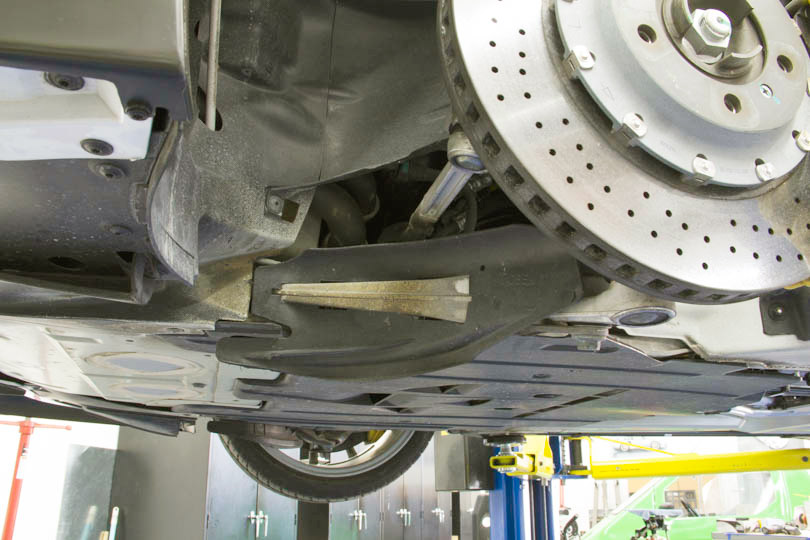
Caster arm is positioned diagonally and connects the lower control arm to the front subframe. The caster arm also features a spherical bearing in the forward position.
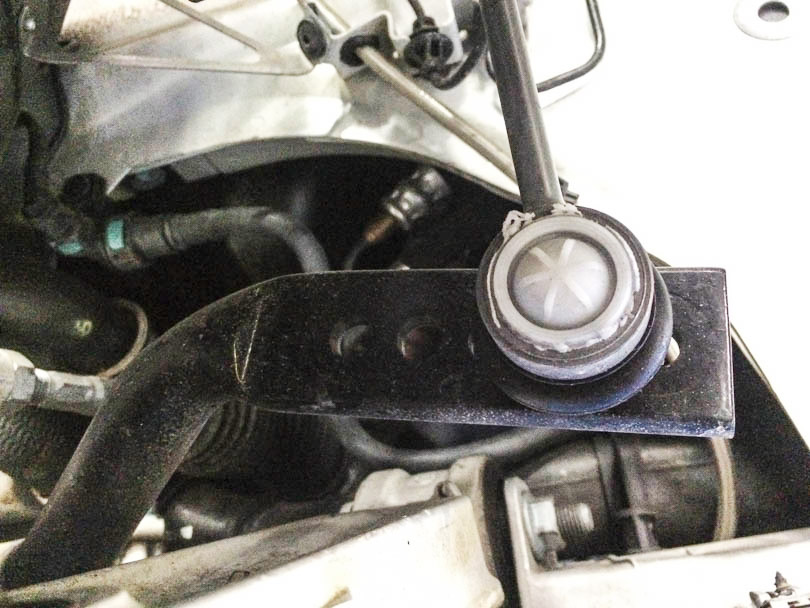
The front swaybar is shorter than one found on a regular Carrera. It’s 27mm thick and provides five holes for stiffness adjustment.
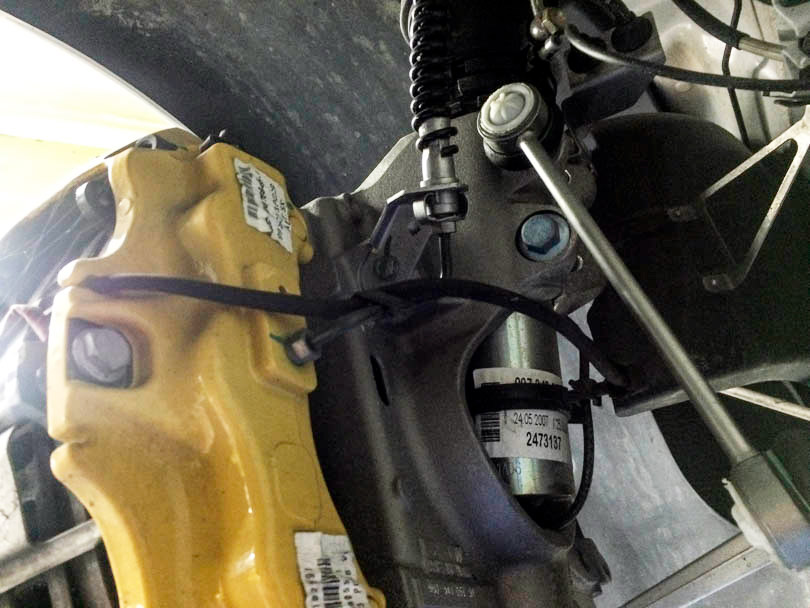
The drop links connect to the top of the upright. The upper drop link stud acts as a clamping strut clamping bolt.
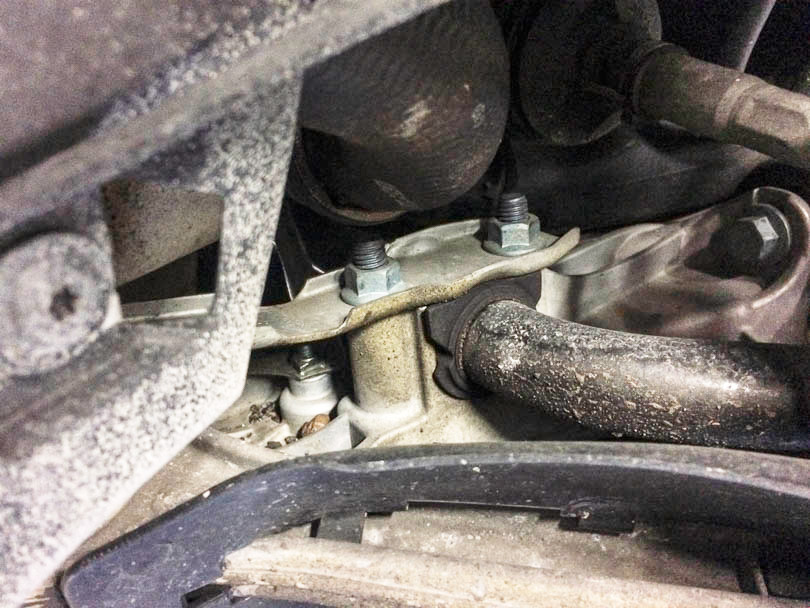
And the swaybar is mounted through the lower subframe resting in front of the steering column.
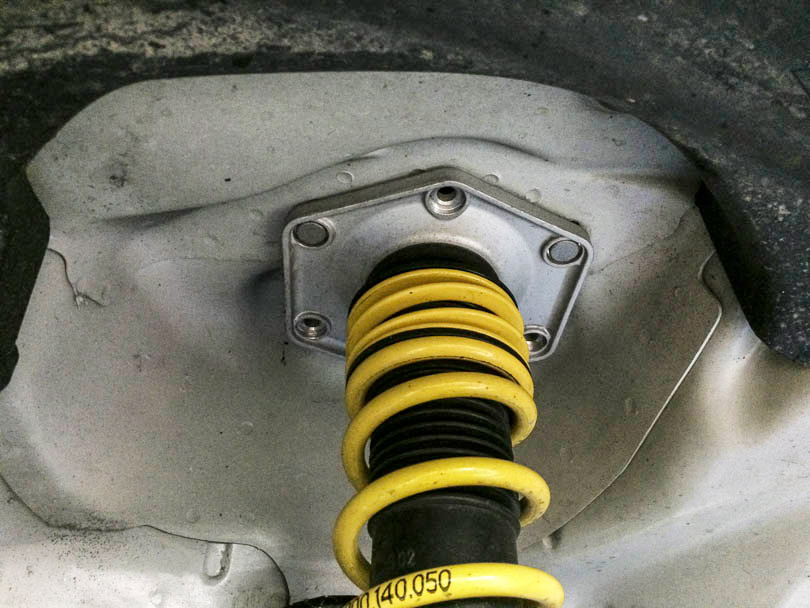
The GT3 features a full, height adjustable coilover.
On this car, the OEM springs have been replaced with two TechArt springs, a helper spring and the main spring. The helper spring collapses under very light load, and is completely collapsed when the car is on the ground. The helper spring keeps the main spring properly seated on the perch when the wheel goes into full droop. This is important because if the suspension travels past the main springs point of compression, which can be common under hard cornering, the spring could fall off the perch and not realign itself properly.
On the OEM setup, a single spring is used. The OEM spring rate is 40 N/mm which translates to about 228 lb/in.
The strut upper mount on the GT3 is also redesigned from regular 911. This mount features a spherical bearing instead of rubber bushing that is found on the Regular car. In this position, rubber acts as a spring in series with the strut. This rubber spring-action is completely un-damped and reduces the struts ability to control the tire contact patch. The spherical bearing allows the strut damper to do its job and control the contact patch. This part is a welcomed replacement.
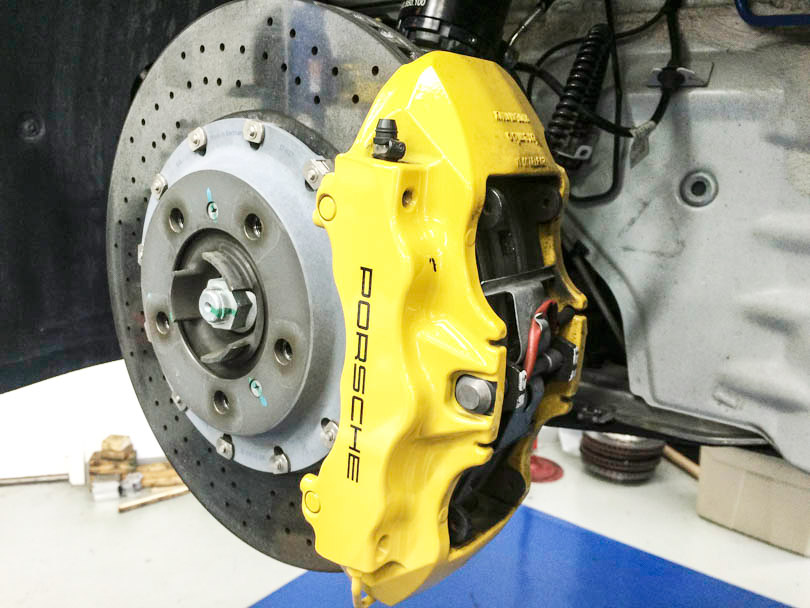
This car features porsche ceramic composite brake (PCCB) discs paired with six piston Brembo caliper. The Gen II PCCB rotors are center vented and cross-drilled, they are 350mm in diameter for some serious stopping power.
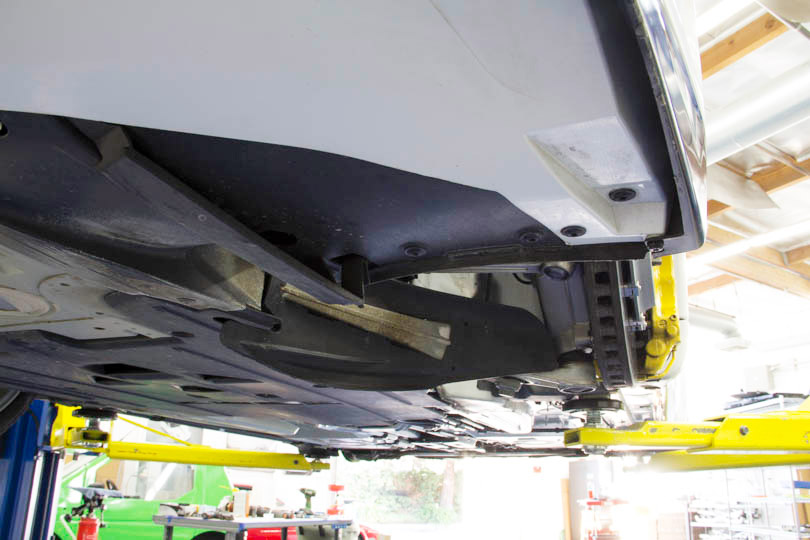
Plastic air ducts draw air from under to cool the brakes, directing the air towards the rotors.
Rear Suspension
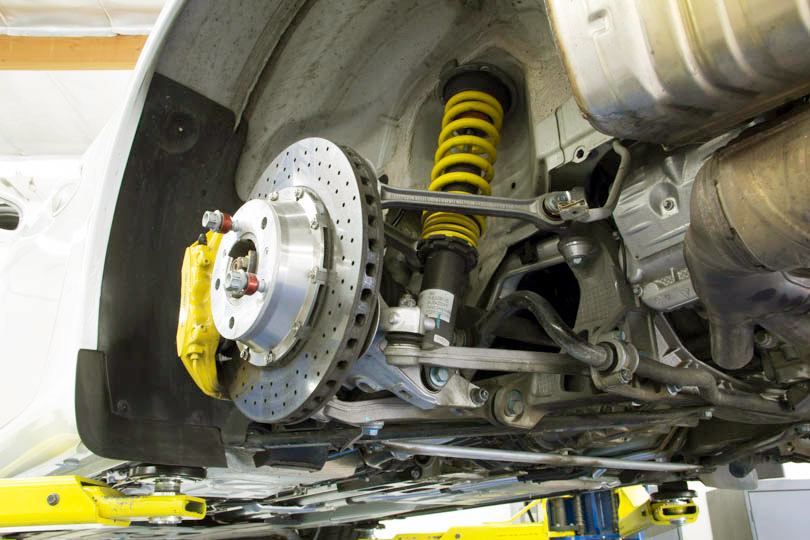
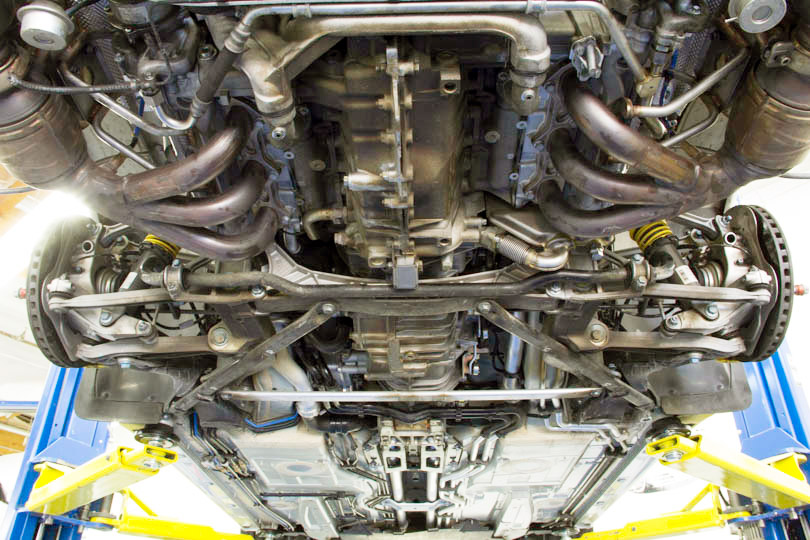
The rear features a multilink suspension system with lower wishbone, track rod and two upper control arms. The setup was introduced in the 996 generation and is still serving well in the 997.
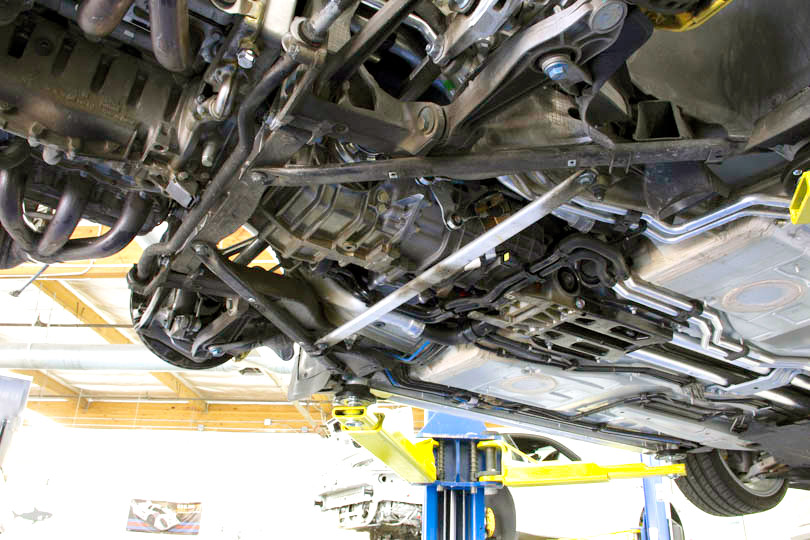
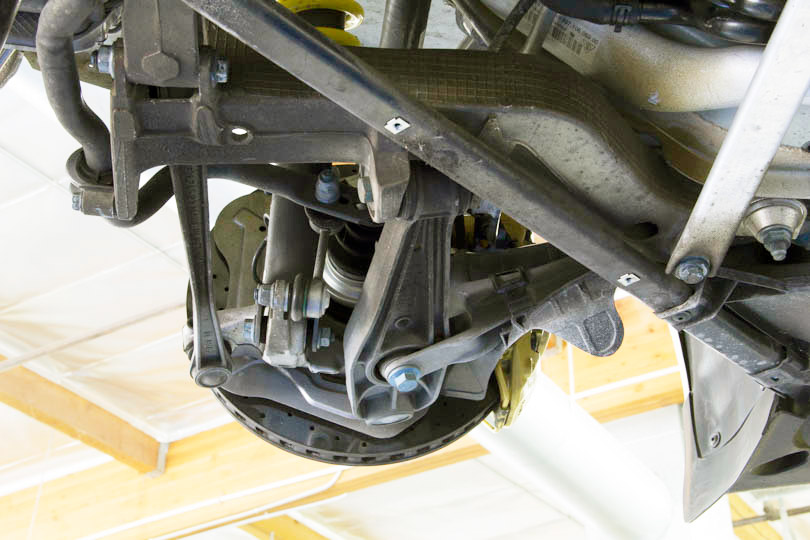
The rear control arms are fixed length, just like the rear control arms on the regular 911.
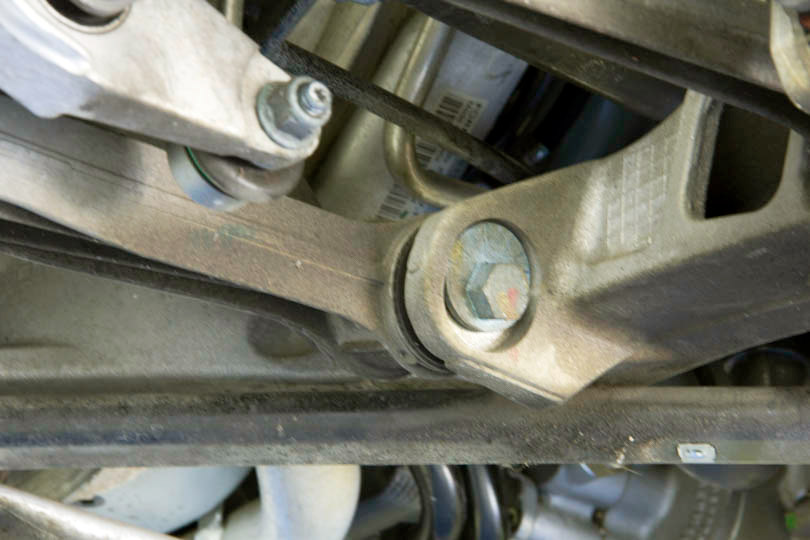
Camber can be adjusted using an eccentric adjuster bolt.
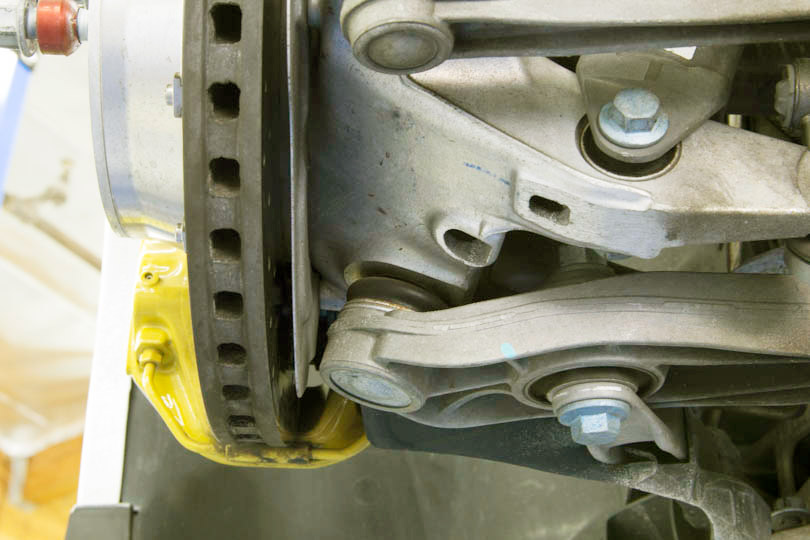
Just like in the front, the rear control arm supports the upright with a ball joint stud.
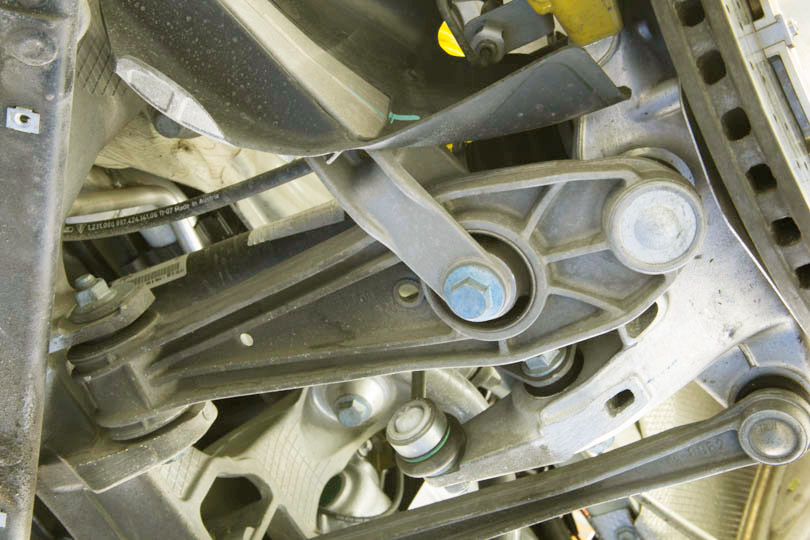
And the arm is supported with a diagonal arm. This is the same arm that is used as caster arm in front.
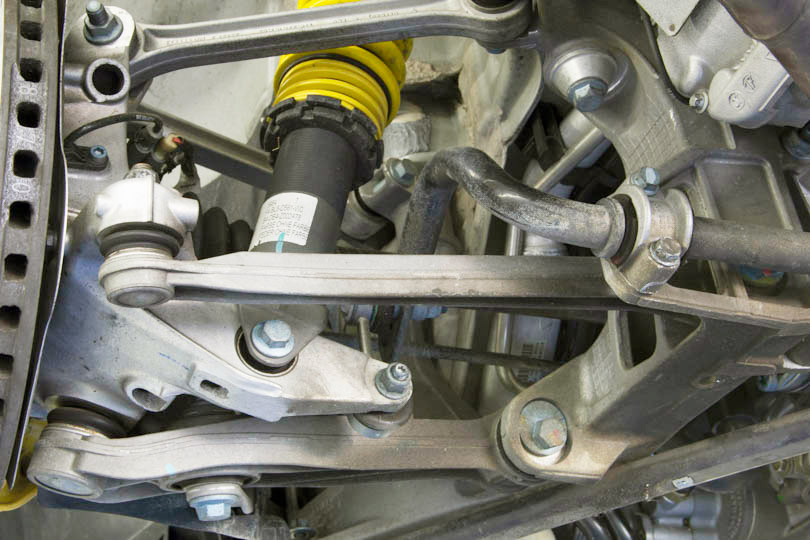
The track rod is responsible for the toe alignment. It features a ball joint on the outer end and rubber bushing on the inner end. The toe is adjusted via eccentric adjuster bolt.

The upper arms are mounted in a V configuration when viewed from above.
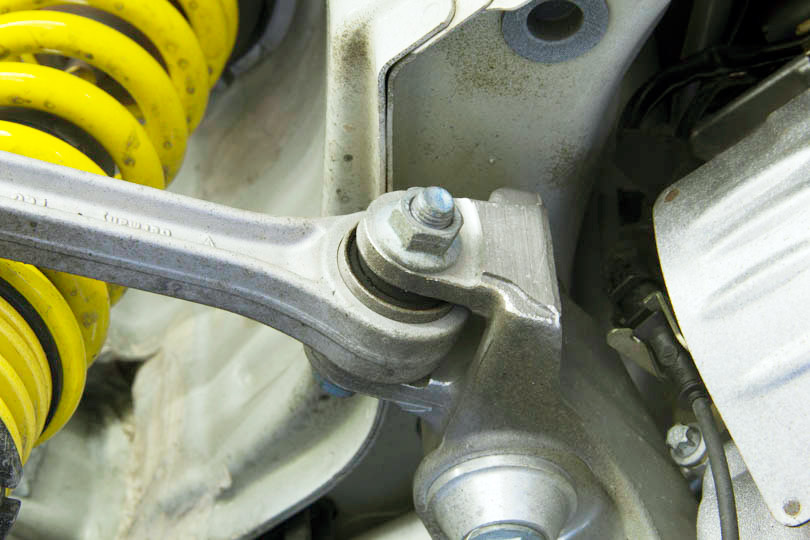
All bushings are rubber.
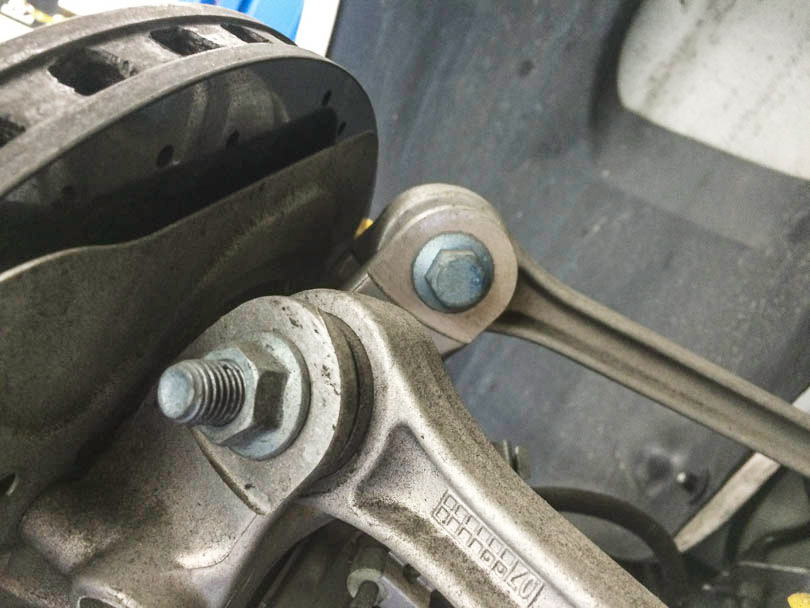

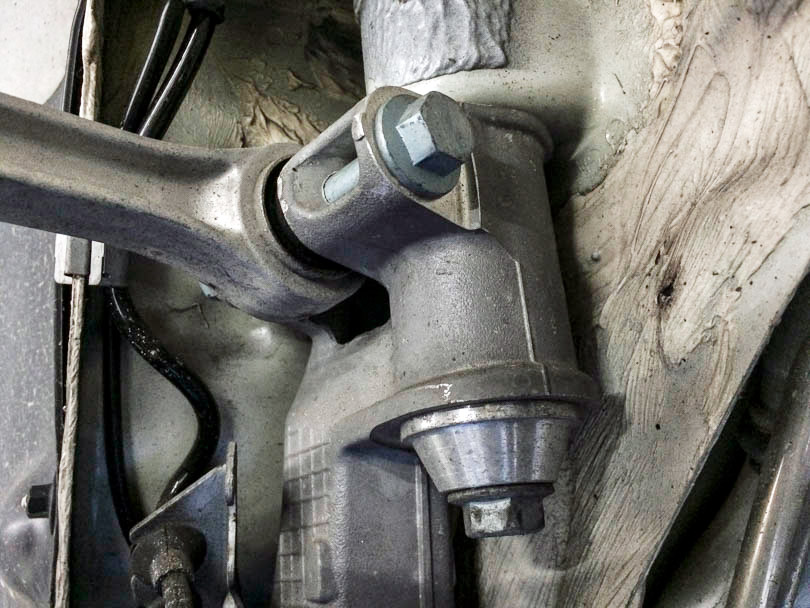
It’s important to note that the subframe bushings are completely solid. Regular Carrera has rubber bushings in this position.
Rubber subframe bushings can compress and deform under heavy cornering, braking, and acceleration loads. This is less of an issue on a street Carrera, however this problem can be quite noticeable on a track or heavy street driving. The compliant rubber bushings allow the entire rear subframe shift about relative to the chassis. Rear camber and toe settings wander along with the subframe making the car less predictable, less stable in turns.
Solid bushings replace the compliant rubber and do not deform under cornering loads, keeping the subframe in position and alignment true even under heavy cornering loads. The car becomes more predictable and easier to drive fast.

The rear shocks are also fully height adjustable coilovers featuring main spring and helper spring. However, just like the front, these springs have been replaced with TechArt spring.
OEM Setup features a single spring with a rate of 105 N/mm which translates to about 600 lb/in.

The shock is mounted on a bushing that is pressed directly into the upright.
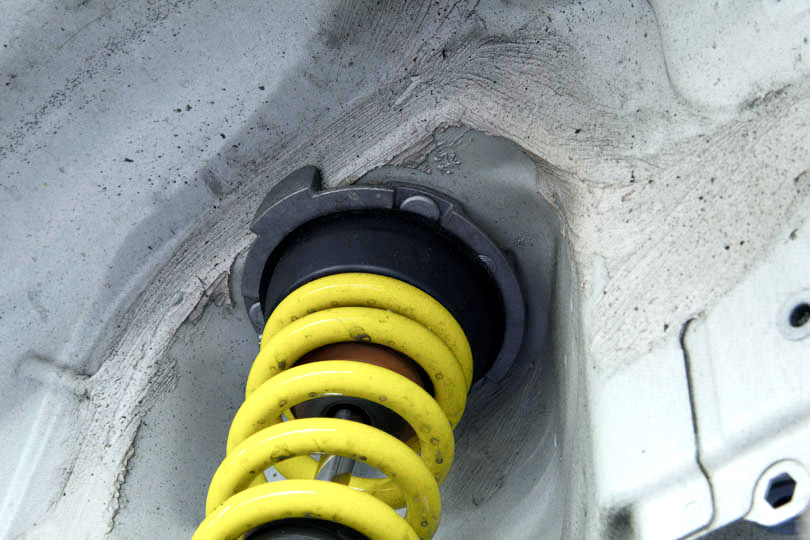
The upper shock mount retains stock rubber bushing.
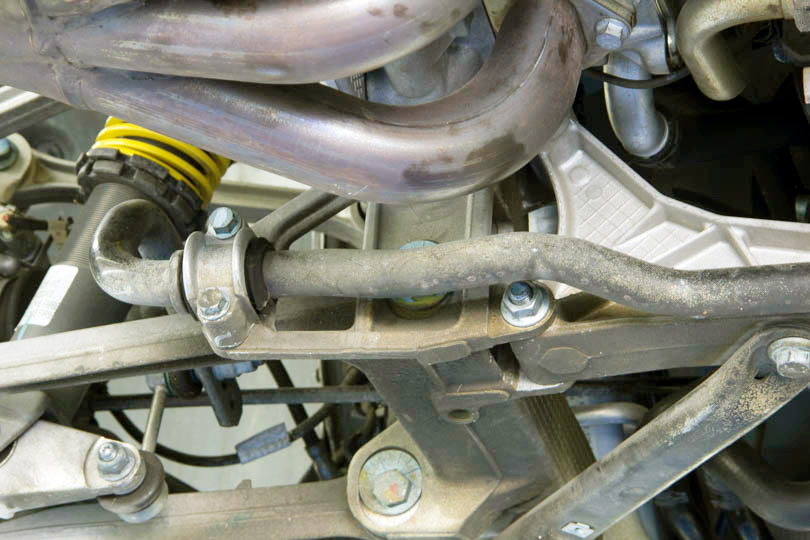
The swaybar is mounted onto the rear subframe.

And features three positions to fine tune the swaybar stiffness.
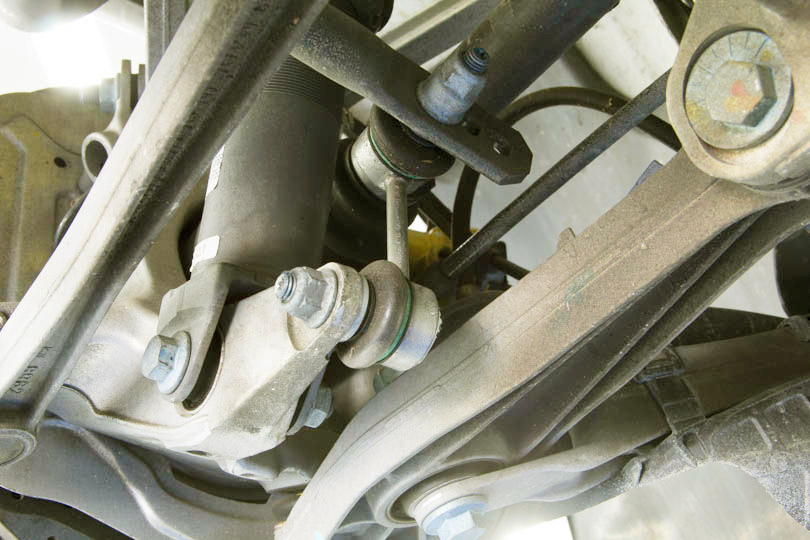
The drop link attaches to the upright right behind the shock mount.
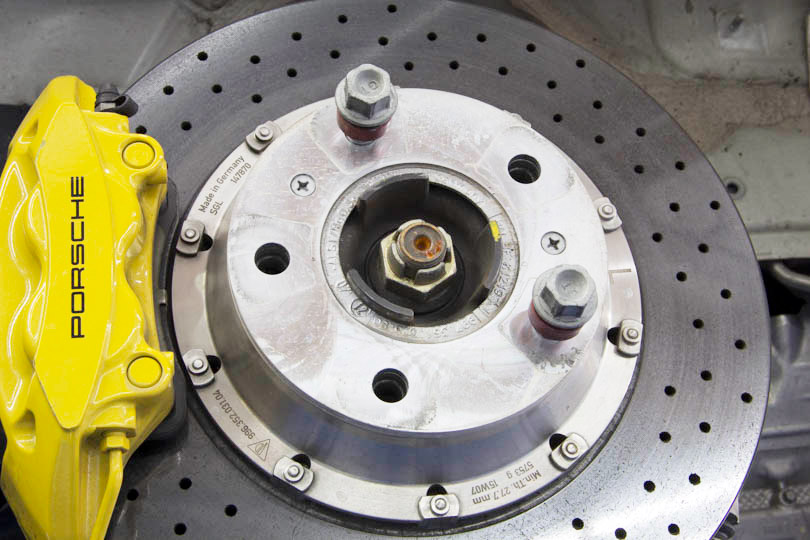
This car sports optional ceramic brakes as well. Ceramic rotors are paired with four piston Brembo calipers.

The optional 5mm rear wheel spacer is also present.
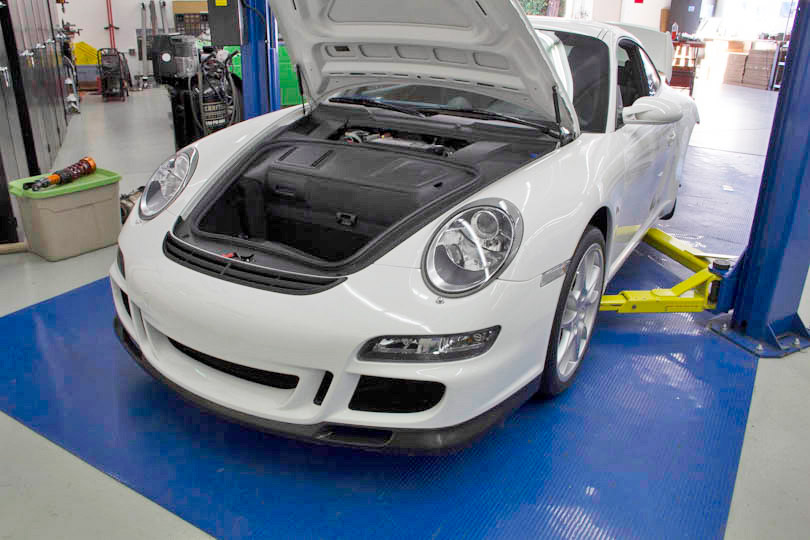
This concludes the 997.1 GT3 suspension overview, for 991 GT3 comparison please check out our 991 GT3 suspension walk-around.












